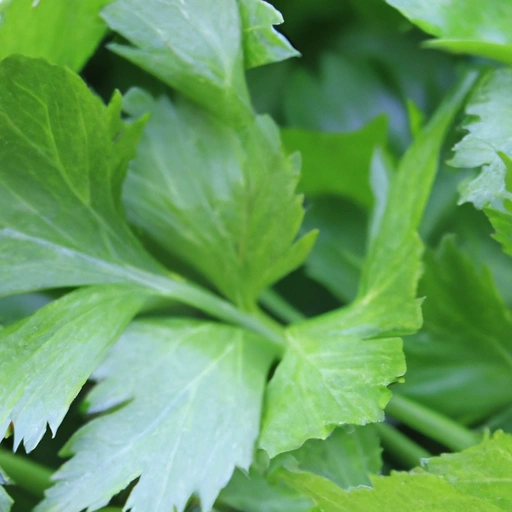Celery Leaf
Description

Celery leaf, the leafy part of the celery plant, is an aromatic herb that is often underutilized in cuisines around the world. While many people are familiar with the stalks of celery, the leaves offer a delicate flavor that can enhance a variety of dishes. In this article, we will explore the historical background, common uses, nutritional value, health benefits, potential risks, and culinary uses of celery leaf, along with a summary of its significance in cooking.
Common uses
Celery leaf is frequently used to add flavor to soups, stews, salads, and as a garnish. It can also be used in making stocks, sauces, and herbal blends such as bouquet garni. In Asian cooking, particularly in dishes from Southeast Asia, celery leaf is appreciated for its fresh, slightly bitter taste and is often included in stir-fries and noodle dishes.
Nutritional value
Calories
Celery leaf is low in calories, making it a suitable addition for those monitoring their calorie intake. For example, a cup of chopped celery leaves (about 25 grams) contains approximately 4 calories (16.7 kilojoules).
Protein
While not a significant source of protein, celery leaf does contain trace amounts. In a 25-gram serving, you might find about 0.3 grams of protein.
Fat
Celery leaf is virtually fat-free, with a 25-gram serving containing only a trace amount of fat.
Carbohydrates
The leaves are primarily composed of water and carbohydrates, with a 25-gram serving providing around 0.8 grams of carbohydrates.
Vitamins
Celery leaves are a good source of vitamins, particularly vitamin K. They also contain some vitamin A and vitamin C.
Minerals
Among the minerals, celery leaves offer potassium, calcium, and magnesium in small amounts.
Health benefits
The nutrients found in celery leaves can contribute to overall health. Vitamin K is essential for blood clotting and bone health, while vitamin A supports vision and the immune system. The presence of antioxidants like vitamin C helps in fighting free radicals, potentially reducing the risk of chronic diseases. Additionally, the dietary fiber in celery leaves aids digestion.
Potential risks
Some individuals may be allergic to celery, and in rare cases, this can extend to the leaves. Celery is also known to contain naturally-occurring compounds called psoralens, which can increase the skin's sensitivity to sunlight and potentially lead to sunburn or rash when handled or consumed in large quantities.
Common recipes
Celery leaf is employed in a variety of recipes, including but not limited to stocks, soups like chicken noodle soup, minestrone, and potato soup, as well as in salads such as Waldorf salad and tabbouleh.
Cooking methods
It can be used fresh or dried and is often added at the end of cooking to preserve its delicate flavor. While it is not typically the focus of cooking methods, it complements boiling, sautéing, and simmering techniques.
Pairing with other ingredients
Celery leaves pair well with ingredients like apples, nuts, poultry, beef, and other fresh herbs like parsley and dill. They can also complement citrus flavors and are often matched with lemon or lime in various dishes.
Summary
Overall, celery leaf is a versatile ingredient that offers a subtle yet distinct flavor to a variety of dishes. It is nutritionally beneficial, low in calories, and contains essential vitamins and minerals. While it is safe for most people, those with a known allergy to celery should avoid its leaves. From a culinary standpoint, its uses are wide-ranging, and it can be a beneficial addition to many recipes from across the globe.